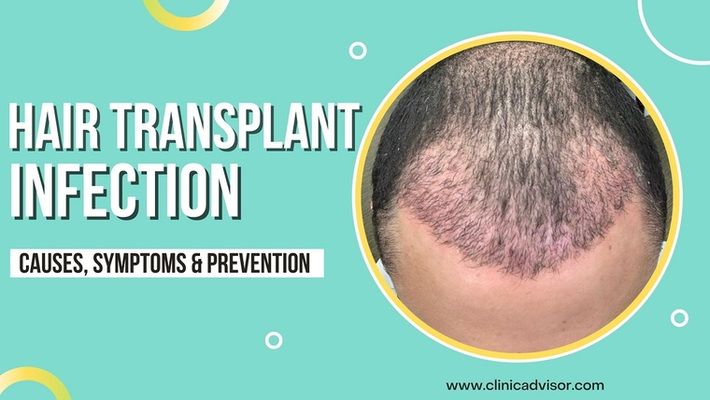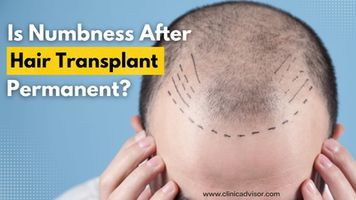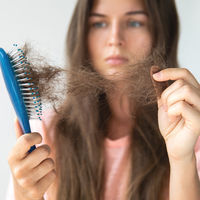
Medically reviewed & verified by Dermatologists at: Avrupa Hair Transplant Clinic
Written by: ClinicAdvisor
Microbes are everywhere, in the air, on surfaces and on your fingernails. We are surrounded by microbes therefore to avoid hair transplant infection you must keep everything hygienic.
Infections are not considered a very common side effect after hair transplant, but it’s a possible one.
Studies show that less than 1% of the people who receive a hair transplant might get a scalp infection.
And the main reason behind infections after hair transplant is hygiene.
In this post, we will discuss the following:
- What is scalp infection after hair transplant?
- What are the symptoms?
- How to prevent it?
- What causes the infection?
- How it can be treated?
- And the associated risks.
What is Hair Transplant Infection?
A hair transplant infection is known as the infection that occurs around the surgical wounds either in the implanted or the donor site.
These infections are very rare but might happen if the surgical incisions are not kept clean.
Especially, with a surgery like hair transplant which results in thousands of tiny holes in the scalp.
Skin infection after hair transplant could happen either by using contaminated instruments during the surgery or due to poor hygiene.
For instance, touching or scratching the head after hair transplant paves the way for germs and microbes to penetrate into the scalp.
What are the Possible Causes Behind Hair Transplant Infection?
There are a few ways that a hair transplant could potentially lead to infection. Here are some possible causes:
#1 Using Unsanitary Surgical Instruments
Choosing the right place to get your hair transplant is very important to avoid any infections and complications.
Unfortunately, we have seen many people who get their hair transplant at unauthorized and unprofessional clinics that do not follow sanitary practices.
This increases the likelihood of infections due to the use of contaminated surgical instruments.
Therefore, bacteria and microbes from these tools can easily penetrate into the scalp through the open wounds causing infections.
#2 Poor Personal Hygiene
Not taking proper care after your hair transplant is one of the main reasons that lead to infections.
Our fingertips are full of microbes which can be easily transferred to the open wounds by touching the scalp.
And that’s why your doctor will warn you from touching your scalp during the first week after hair transplant.
#3 Scab Formation and Severe Itching
Another reason for hair transplant infection is scratching or picking the scabs that form on your scalp. 
We understand that these scabs will make you feel itchy but it’s very important not to scratch so that the wounds are not infected with germs.
Consult with your doctor and he/she will explain to you how to reduce itching after hair transplant.
#4 Being in Contaminated Areas
Being in dusty places or areas where cleanliness procedures are not applied could infect your wounds.
That’s why you should avoid such places for the first 2 weeks to reduce the possibility of getting an infection.
#5 Exercising and Sweating
There is a valid reason why doctors always recommend their patients to avoid working out for one month after hair transplant.
Exercising heavily makes you sweat and sweating leads to infections.
You should also avoid any instances that could make you sweat after hair transplant like exposure to sunlight or going to steam rooms.
#6 Smoking and Drinking Alcohol
Smoking and drinking alcohol affects the healing process and slows it down which eventually leads to infections.
Hair Transplant Infection Symptoms
There are a few hair transplant infection signs that you should watch for if you think you may have an infection. These include:
- Pain in the area where the surgery was done
- Redness and swelling that persists for more than a week
- Severe Itching
- Burning sensation
- Pus
- Bleeding
- Fever and chills
- Nausea and vomiting
- Headache
If you experience any of these symptoms, you should contact your doctor immediately.
In some cases, antibiotics may be necessary to treat the infection.
How to Avoid Infection After Hair Transplant?
Here are some ways that will help you avoid getting a hair transplant infection:
- Make sure to avoid contact with the incision site. This means washing your hands thoroughly before and after the surgery.
- Follow the post-operative instructions your doctor gives you.
- Take your antibiotics as prescribed by your doctor.
- Avoid heavy workouts for a month after hair transplant.
- Stay away from smoking and drinking any alcoholic beverages.
- Do not pick the scabs or scratch your scalp.
- Keep the area clean and dry. This means avoiding excess sweating, and exposure to dust.
- Finally, choose a licensed and authorized clinic which follows sanitation procedures.
Ways to Treat the Infection After a Hair Transplant
To treat infections after hair transplant, your doctor may prescribe oral or topical antibiotics and an antibacterial shampoo.
But, in case the infection was severe and contains pus the doctor may drain it to promote faster healing.
What are The Associated Risks of Infection After Hair Transplant?
If you get a hair transplant infection there could be some associated risks with it which include:
- Lower rate of hair growth which affects the end result.
- Infection may also lead to scarring.
- In very severe and rare cases an infection may lead to Septicemia which is a blood poisoning caused by bacteria.
Does the Type of Hair Transplant Technique Affect the Rate of Infection?
Hair transplant is done by two main techniques: the FUT (Strip Method) or the FUE (Follicular Unit Extraction).
The graft extraction from the donor area is carried out differently in each technique.
In the FUT, the surgeon excises a strip from the back side of the head and then sutures the wound. This leaves a linear scar along the donor area. 
While in the FUE, grafts are extracted one by one using either a manual or motorized punch to detach the hair follicles.
This leaves micro hole in the donor area which are almost not visible if performed properly.
It is said that with the FUT technique the risk of infection after hair transplant is higher due to the size of the wound.
So, the bigger the wound the more likely it might lead to infection if not taken care of properly.
But, regardless of which technique is used an infection after hair transplant is rare and can be prevented if the surgery is done at a licensed clinic which follows all the hygiene standards.
You can also avoid getting infected if you follow your doctors instructions and keep your scalp clean.
Frequently Asked Questions
How do I know if my hair transplant is infected?There are some signs of infection after hair transplant which indicates that you could be having an infection. These symptoms include feeling pain in the surgical sites, swelling and redness that continues for more than a week, severe itching, a burning sensation, oozing pus, and you might also feel some chills, fever and nausea. If you see any of these signs you should immediately report to your doctor. | What happens if hair transplant gets infected?An infection after hair transplant will cause some scarring which may lead to patchy hair growth and a decreased hair growth rate. In some severe and rare cases it might lead to a condition known as Septicemia which is poisoning in the bloodstream caused by bacteria. That's why it's very important to inform your doctor if you start noticing some signs of hair transplant infection. |
How can I prevent infection after hair transplant?An infection after hair transplant can be prevented by keeping your scalp clean and following a hygiene routine. You should also avoid touching, scratching or picking the scabs as germs from your fingers can penetrate into the scalp through the wounds on the donor and recipient site. And most importantly you should follow your doctor's recommendations such as avoiding strenuous activities that makes you sweat, abstaining from alcohols and smoking and taking your antibiotics as prescribed. | Do you need antibiotics after hair transplant?Antibiotics are normally prescribed to patients after hair transplant for a period of 5 days. This helps in reducing the risk of getting an infection and promotes faster healing of the scalp. |






Share Your Opinion, Please